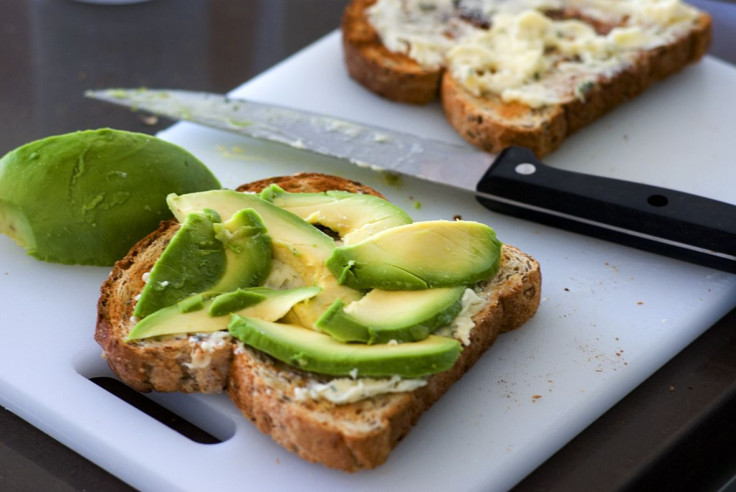Celebrate Your Health On National Food Day: 8 Ingredient Swaps To Help You Prepare Healthier, Delicious Food

Oct. 24 is National Food Day and what better way to celebrate than by learning how to make healthy foods taste delicious. Eating healthy can be hard, especially when people sacrifice their favorite comfort foods for clean, low-calorie meals. By rewriting your grocery list by incorporating healthy, whole, and unprocessed foods, you’ll maximize energy and optimize overall health.
Unfortunately today, only 65 percent of Americans cook and eat at home, compared to 95 percent of households in the mid-1960s. It has nothing to do with socioeconomic status, but instead more to do with the time men and women are collectively spending in the kitchen. At the downward rate Americans are going, less than half of all dinners eaten at home will be homemade. People report not having enough time to cook anymore, but eating out often entails high-calorie and salt and fat-laden meals because you’ve given up control of how your meal is prepared.
Take back your power of the kitchen and ingredients your meals contain. By cutting 500 calories each day, you can drop one pound of fat a week. A couple of food swaps can save you from ruining your diet with useless calories, and over time, those incremental changes can add up and help you lose 10 pounds in five weeks. Here are eight small, healthy changes you can make to lose or maintain weight in a less stressful, more nutritious way.
1. Avocado for Mayo
Mayonnaise is often used as a staple for many sandwiches, salads, dips, and other dishes. An avocado is full of good fat, which is why it still packs a delicious creamy flavor, along with potassium and fiber. Avocados also have fewer calories, are lower in cholesterol, saturated fat, and sodium. If you love potato or tuna salad, instead of using mayonnaise as a base, replace it with mashed or pureed avocado. Avocados also work well to replace butter’s fattening flavor in many recipes or even as a spread on a piece of toast.
2. Greek Yogurt for Sour Cream
Sour cream is often mixed together with dips, Mexican-inspired cuisines, and some baked goods recipes like cheesecake. Non-fat Greek yogurt is a low-calorie, non-fat way to replace high-calorie sour cream with a better ingredient that maintains the same flavor. Greek yogurt is full of protein, usually weighing in at 11 to 15 grams a serving.
3. Spices for Condiments
Spices are a zero-calorie way to add flavor to any dish. Certain spices also provide antioxidants to improve overall health. You don’t have to leave your baked sweet potato fries naked just because ketchup contains too much salt and sugar. Instead, toss on a Cajun spice before you throw them in the oven and enjoy the flavor combination. Barbeque sauce may be the biggest one you need to avoid, according to registered dietitian Stephanie Senior. It contains molasses, corn syrup, and salt. Instead, toss ribs in a dry rub to maintain the smoked flavor.
4. Squash for Pasta
Pasta is a popular carbohydrate in cultures throughout the world that has become an American favorite. But too many carbs convert into glucose, which is then stored as fat if it isn’t burned off during exercise. Instead, choose a low-calorie and nutritious vegetable option to replace the noodles. Spaghetti squash becomes stringy and noodle-like when it’s strained out with a fork. You can also use zucchini by using a “zoodle” kitchen tool to turn the veggie into spaghetti-shaped noodles. Toss some sauce on and enjoy your extra serving of vegetables.
5. Unsweetened Applesauce for Sugar
When baking, most recipes call for some sort of sugar and in many cases it’s necessary to give the baked good the flavor it needs to be palatable. Sugars are empty calories, making them nutritionally useless. Instead, replace one tablespoon of sugar with one tablespoon of unsweetened applesauce to give it a natural sugar taste with no fewer calories and no fat per serving.
6. Bananas for Eggs
Love brownies? To replace whole eggs in chewy baked goods like brownies and cookies, use one ripe mashed banana for every egg a recipe calls for. It’s not that eggs are necessarily bad for you — in fact, they add protein and nutrients into the dish. However, too many eggs can raise cholesterol levels. In such case, a potassium-packed and fiber-friendly banana can come in handy.
7. Black Bean Puree for White Flour
Another baking trick clean eaters can rely on is using black bean puree instead of white flour. Pureed black beans (that are drained and rinsed) replace flour cup-for-cup in order to cut calories and add in protein. It works best when baking, especially when making brownies.
8. Rolled Oats for Breadcrumbs
Breadcrumbs may seem like a harmless ingredient that doesn’t add many calories to a meatloaf or meatballs, but half a cup of typical breadcrumbs has over 200 calories. Rolled oats not only provide extra fiber that works to lower cholesterol levels, but they’re also half the calories. Breadcrumbs are often high in breadcrumbs and because they’re lower in fiber than rolled oats, they wind up being less filling.



























